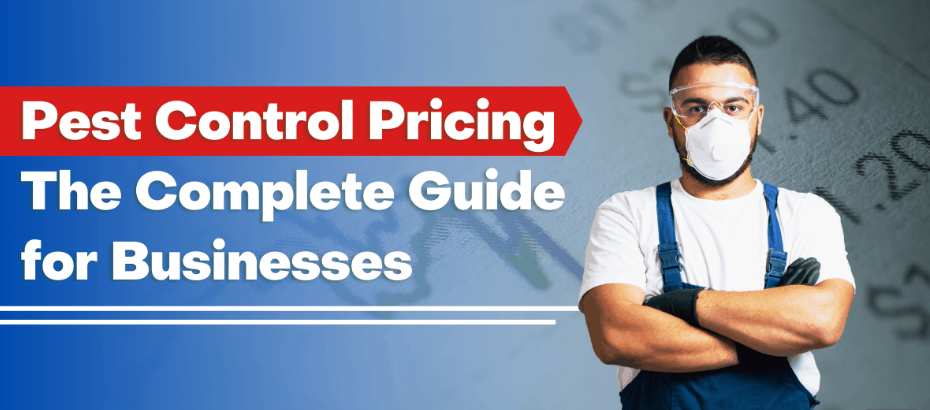Pests are a nuisance that many of us encounter at some point in our lives. From pesky ants invading our kitchens to the more unsettling presence of rodents or insects, dealing with these unwanted guests can be both bothersome and costly. When it comes to managing pests, finding the right balance between cost and effectiveness is key. This article delves into the world of pest control prices, exploring how to navigate the expenses while effectively combating these intruders.
Table of Contents
- 1. Understanding Pest Control Costs
- 2. Factors Affecting Pricing
- 3. Types of Pest Control Services
- 4. Cost-Effective DIY Solutions
- 5. Professional Extermination Services
- 6. Local Pricing Variations
- 7. Long-term Cost Considerations
- 8. Balancing Effectiveness and Expense
- 9. Comparing Pest Control Companies
- 10. Negotiating Pricing
- Frequently Asked Questions
- What are the typical factors that influence pest control prices?
- Are professional pest control services significantly more expensive than DIY methods?
- How can one ensure the transparency of costs when hiring a pest control company?
- What are the long-term cost considerations of pest control?
- How do pest control methods impact the environment and human health?
- Conclusion
1. Understanding Pest Control Costs
Pest control prices encompass a wide spectrum, ranging from cost-effective do-it-yourself (DIY) approaches to the more substantial expenses incurred by professional services. Understanding this range of costs is paramount in making informed decisions regarding pest management. While DIY methods might seem economical upfront, they may not adequately tackle severe infestations, potentially resulting in recurring expenses. Professional services, although initially pricier, often offer expertise, targeted treatments, and long-term solutions, potentially saving money in the long run.
2. Factors Affecting Pricing
Numerous factors influence the pricing of pest control service. The type of pest, the severity of the infestation, and the chosen method of treatment significantly impact costs. For instance, eradicating a minor ant infestation might cost considerably less than exterminating a severe termite problem. Additionally, the size of the property or premises to be treated can affect the overall pricing. Furthermore, the type of treatment chosen, whether chemical-based or eco-friendly, can also influence the final cost.
3. Types of Pest Control Services
Pest control service come in various forms, each with its associated pest control costs. Chemical treatments, while effective, may be more expensive and raise environmental and health concerns. On the other hand, eco-friendly approaches, utilizing natural remedies or non-toxic solutions, might be costlier initially but can offer a more sustainable and safer long-term solution. The costs associated with these methods may vary depending on the severity of the infestation and the type of pest being targeted.
4. Cost-Effective DIY Solutions
Budget-friendly methods for pest control involve various DIY solutions. Natural remedies, such as using vinegar to deter ants or employing essential oils for repelling insects, are cost-effective measures that can be applied at home. Preventive measures, like sealing entry points and maintaining cleanliness, are essential in averting pest problems. While these DIY methods are economical, they might not be as effective for severe infestations, requiring professional intervention.
5. Professional Extermination Services
Professional exterminators offer a range of benefits that justify their costs. Their expertise, advanced treatments, and tailored solutions are often more effective in eradicating persistent and widespread infestations. While the initial expense might seem higher, their services typically come with warranties or follow-up treatments, ensuring a long-term resolution. Comparing services and pricing among different professional exterminators is crucial in finding a balance between cost and effectiveness.
6. Local Pricing Variations

Location plays a significant role in the pricing of pest control service. Various factors such as the region’s climate, prevalent types of pests, and the availability of services influence local pricing. Areas with higher pest prevalence might have more competitive pricing due to increased demand. Additionally, urban areas might have higher service costs compared to rural regions due to higher operating expenses. Understanding these local variations is crucial in evaluating and budgeting for pest control services.
7. Long-term Cost Considerations
Long-term expenses in pest control extend beyond initial treatments. Recurring costs for maintenance, follow-up treatments, and preventive measures are critical for sustaining a pest-free environment. Investing in regular inspections, maintenance, and implementing preventive actions can significantly reduce long-term costs by avoiding severe infestations that might be more expensive to eradicate.
8. Balancing Effectiveness and Expense
Striking a balance between the effectiveness of pest control methods and their associated costs is crucial. Understanding that costlier methods might not always equate to better results is key. Evaluating the effectiveness of different treatments against their costs is essential in achieving a satisfactory outcome. Effective pest control should not break the bank, and finding the right balance between expense and desired outcomes is the primary goal.
9. Comparing Pest Control Companies
Effectively comparing pest control companies involves more than just considering their costs. While pricing is important, it’s equally crucial to assess the range and quality of services offered. Factors like their reputation, experience, customer reviews, and guarantees should be considered alongside their pricing structures. By weighing the services against their costs, one can make an informed decision when choosing a pest control company.
10. Negotiating Pricing
Negotiating with pest control companies is a viable strategy to obtain a fair deal without compromising on quality. To negotiate effectively, understanding the scope of services, comparing quotes from multiple providers, and asking for discounts or bundled services can help in getting the best value for the expense. Ensuring transparency and clear communication throughout the negotiation process is key to reaching a mutually beneficial agreement.
Frequently Asked Questions
What are the typical factors that influence pest control prices?
The cost of pest control can be influenced by various factors like the type of pest, the severity of the infestation, the chosen treatment method, and the size of the property.
Are professional pest control services significantly more expensive than DIY methods?
Professional services might come with a higher price tag, but they also offer expertise, effectiveness, and potentially long-term solutions, which can outweigh the costs.
How can one ensure the transparency of costs when hiring a pest control company?
Transparency in costs can be ensured by asking for detailed quotes, understanding the scope of services included, and verifying the terms of the contract.
What are the long-term cost considerations of pest control?
Long-term costs include recurring treatments, maintenance, and follow-up services to ensure the sustained elimination of pests.
How do pest control methods impact the environment and human health?
Certain pest control methods can pose risks to the environment and human health. Choosing eco-friendly options or preventive measures can minimize these impacts.
Conclusion
The world of pest control prices is multifaceted, offering a spectrum of solutions ranging from do-it-yourself methods to professional extermination services. Understanding the range of costs involved is essential in making informed decisions. Factors such as the type of pest, severity of infestation, and the method of treatment significantly impact pricing.
While cost-effective do-it-yourself solutions and eco-friendly approaches present budget-friendly options, they might not be sufficient for severe infestations, warranting the need for professional services. Professional extermination services, albeit initially pricier, often offer expertise and targeted treatments, potentially resulting in long-term solutions, ultimately saving both money and hassle.


